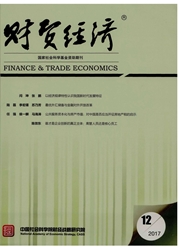

 中文摘要:
中文摘要:
当前政策性农业保险是制度诱导下的被动式发展,还是农户风险管理需求下的主动式发展,这是判断农业保险成熟度的标志,也是中国从农业保险大国向农业保险强国转变的关键点。本文选取中国粮食主产区江苏省,对其14个区县585户粮食种植农户进行问卷调查,并通过Pearson相关性分析和BP神经网络进行保险购买决策模拟。研究发现:当前中国政策性农业保险是制度诱导与农户风险管理内在需求交互作用下的混合决策,但是制度诱导依然是农业保险的主要驱动力。据此,应从农户的风险认知、保险认同的提升入手,结合保险市场的险种与服务创新,使得农业保险可与不同农业经营主体的生产决策目标相匹配;同时将农业保险与农村社会保障举措相融合,实现农村金融工具的协同效应。
 英文摘要:
英文摘要:
Policy oriented agriculture insurance has been developing rapidly in China. From another perspective, there are two causes of the development: one induced by crop producers' demands of risk management is positive, the other driven by policies is negative. Whether the cause of this development is positive or not decides the maturity of agricultural insurance. Meanwhile, it is the key mark that indicates whether China's agricultural insurance is powerful. Therefore, this research has sent out questionnaires to 585 crop producers in fourteen districts or counties selected in Jiangsu province, a major crop producing province in China, and has simulated the decisions of insurance purchasing through Pearson correlation analysis and BP neural network. The result reveals that the insurance purchasing is decided by both positive and negative causes while the policy is still the main drive. According to that, the innovation of insurance products should be connected with the promotion of crop producers' risk perception and acceptation of insurance, in order to meet the diversified demands of different groups. Meanwhile, agricultural insurance should be reconciled with measures of rural social security to realize the synergistic effect among rural financial instruments.
 同期刊论文项目
同期刊论文项目
 同项目期刊论文
同项目期刊论文
 期刊信息
期刊信息
